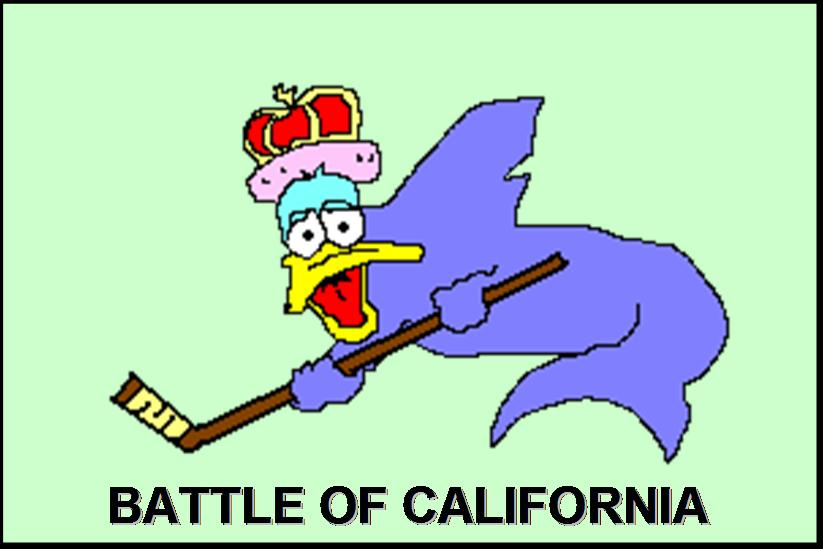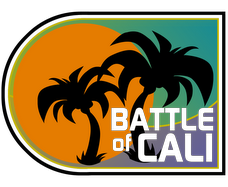Ducks Preview, Part 1: Defining what needs to be replaced
Well, now that camp is halfway done and it’s become apparent that Niedermayer or Selanne have no imminent plans to rejoin the team, I think I can finally sit down and start writing up a season preview. Previewing this Anaheim team is still a bag of questions, however, as I don’t really know how forward lines or defensive pairs will be laid out, but in any case a good first step is to determine precisely what’s missing from last year. Essentially, this can be boiled down to three significant players and their contributions: Teemu Selanne, Dustin Penner, and Scott Niedermayer. These three combined for 103 goals over 103 games (regular season plus playoffs), but let’s delve in a bit to see where those goals really came from.
To study this, I am going to compare Selanne & Penner’s output to the results of the rest of the Anaheim forwards. Then I will compare Niedermayer’s output to the results of the rest of the defensemen. Finally, I will look at all three players’ results compared to the rest of the team.
Note that this strictly is dealing with on-ice productivity, ignoring such factors as experience, leadership, salary, or popularity. I will also be talking a bit about quality of minutes based on Behind the Net’s quality of teammate and quality of opposition metrics, which basically provide a context for the ice time based on the other players on the ice.
EVEN STRENGTH
Teemu Selanne—Teammate ranking: 15 / 676, Opposition ranking: 566 / 676
Dustin Penner—Teammate ranking: 104 / 676, Opposition ranking: 572 / 676
Scott Niedermayer—Teammate ranking: 486 / 676, Opposition ranking: 132 / 676
Player | ES TOI | ES G | ES A | ES Pts | ES Plus | ES Minus |
|---|---|---|---|---|---|---|
Teemu Selanne | 1,364 | 28 | 27 | 55 | +72 | –42 |
Dustin Penner | 1,125 | 23 | 13 | 36 | +48 | –44 |
Rest of forwards | 11,339 | 125 | 185 | 310 | +478 | –386 |
Selanne / Penner Pct. | 18% | 29% | 18% | 23% | 20% | 19% |
Scott Niedermayer | 1,803 | 8 | 35 | 43 | +80 | –67 |
Rest of defense | 7,593 | 17 | 73 | 90 | +320 | –253 |
Niedermayer Pct. | 19% | 32% | 32% | 32% | 20% | 21% |
All three players | 4,292 | 59 | 75 | 134 | +200 | –155 |
Rest of team | 18,932 | 142 | 258 | 400 | +798 | –639 |
Three Player Pct. | 18% | 29% | 23% | 25% | 20% | 20% |
Takeaways: Both Selanne and Penner had relatively easy ice time, playing mostly with teammates that produced at even strength and against opponents that did not. Using that icetime, Selanne and Penner were able to score 29% of Anaheim forwards’ goals and 23% of the points, using 18% of the available ice time. Those are lofty numbers, but there is plenty of scoring ice time available to help replace that production.
Niedermayer, on the other hand, played much more difficult even-strength shifts, and despite this was able to score 32% of Anaheim defensemen’s goals and points using 19% of the available ice time. These are going to be much more difficult points to replace at even-strength, as it will have to be done with some defensive-oriented teammates and against some lofty competition.
Overall, the three players produced 29% of Anaheim’s even-strength goals and 25% of Anaheim’s even-strength points.
POWER PLAY
Teemu Selanne—Teammate ranking: 4 / 428, Opposition ranking: 406 / 428
Dustin Penner—Teammate ranking: 23 / 428, Opposition ranking: 353 / 428
Scott Niedermayer—Teammate ranking: 8 / 428, Opposition ranking: 356 / 428
(note that these rankings are based on 5-on-4 only)
Player | PP TOI | PP G | PP A | PP Pts | PP Plus | PP Minus |
|---|---|---|---|---|---|---|
Teemu Selanne | 479 | 25 | 29 | 54 | +68 | –3 |
Dustin Penner | 315 | 9 | 8 | 17 | +37 | –3 |
Rest of forwards | 1,604 | 43 | 83 | 126 | +215 | –17 |
Selanne / Penner Pct. | 33% | 44% | 31% | 36% | 33% | 26% |
Scott Niedermayer | 582 | 10 | 27 | 37 | +77 | –7 |
Rest of defense | 982 | 18 | 56 | 74 | +125 | –6 |
Niedermayer Pct. | 37% | 36% | 33% | 33% | 38% | 54% |
All three players | 1,376 | 44 | 64 | 108 | +182 | –13 |
Rest of team | 2,586 | 61 | 139 | 200 | +340 | –23 |
Three Player Pct. | 35% | 42% | 32% | 35% | 35% | 36% |
Takeaways: By the end of the playoffs, Selanne, Penner, and Niedermayer made up 3/5 of the Ducks’ top power play unit. And even though the Ducks’ PP sputtered towards the end of the playoffs, it still was one of the best performing units throughout all of last year.
Because of the PP dominance, you can see that all three players have very easy-looking quality of icetime, though I should caution that the Teammate ranking is largely based on playing with each other, something that replacement players will not have the benefit of. Still, the players who will need to replace this offense will be given the opportunity to play with the best available teammates, so I’m not sure how these metrics will be affected.
Power play results are a pretty tricky concept, especially when overhauling most of a top unit. It’s tough to get a handle on how chemistry, positions, or roles will change. Selanne in particular appears the most difficult to replace, as his 25 regular season power play goals led the entire league.
One strange factor to note, though: despite the lofty numbers, this trio of players only combined for one postseason power play goal. I guess the encouraging thing is that the Ducks were still able to win despite the special teams dropoff.
PENALTY KILL
(Both Selanne and Penner played less than 10 minutes of PK time, so they are exempted.)
Scott Niedermayer—Teammate ranking: 160 / 395, Opposition ranking: 68 / 395
(note that these rankings are based on 4-on-5 only)
Player | SH TOI | SH G | SH A | SH Pts | SH Plus | SH Minus |
|---|---|---|---|---|---|---|
Scott Niedermayer | 415 | 0 | 0 | 0 | +2 | –46 |
Rest of defense | 1,271 | 0 | 4 | 4 | +10 | –106 |
Niedermayer Pct. | 25% | 0% | 0% | 0% | 17% | 25% |
Takeaways: This is why Scott Niedermayer is amazing. Alongside his impressive even-strength and power play assignments, he also threw in quite a bit of shorthanded play as well. His results don’t look terribly spectacular, but considering his difficulty of 4-on-5 minutes and his regular spot on 2-man disadvantages, it is significant time that will need to be replaced as well.
THE BOTTOM LINE
These three players represent 29% of Anaheim’s even-strength goals and 42% of Anaheim’s power play goals, and all told represent one full goal-scored per game. That said, there is some pretty attractive ice time available to help offset these losses. With this in mind, let’s take a quick glance at the two main replacements that were brought in this summer:
Mathieu Schneider: Schneider is a pretty optimal replacement for Scott Niedermayer’s even-strength and power play production, I think. He certainly won’t have the versatility and endurance to replace all of Niedermayer’s ice time, but if Scott’s penalty kill can be absorbed by other defensemen (Shane Hnidy or Sean O’Donnell, perhaps), then I think the Ducks can avoid a huge dropoff in their blueline production.Anyway, it’s clear looking at the players leaving and the replacements that Anaheim (in the absence of any future roster moves) is due for a drop-off; there’s just not enough talent coming back to replace the talent that is leaving. Of course, all this gets thrown out the window should either Selanne or Niedermayer decide to pick up the skates and start playing again, but in their absence, how much will the offense suffer? And how much will that affect results?
Todd Bertuzzi: This is where things get complicated. In a good scenario, Bertuzzi could pick up Selanne’s slack on the top line; in a bad scenario, Bertuzzi is only good enough to pick up Penner’s slack on the second line. But for sure, he will not be able to replace both of them, and whichever one’s offense he cannot replace will have to be offset from within the organization (a tall order, especially if it’s Selanne’s production). Bertuzzi certainly has upside that could possibly replace Selanne, but it’s tough to know for sure until he sees some regular ice time.
I don’t have a solid idea of how this season will turn out for Anaheim’s title defense, but this post gives an idea of what the on-ice obstacles will be. It certainly promises to be a revealing year for Anaheim, though, and while I can’t predict it very well, I’m still looking forward to it with eagerness.
Go Ducks.









6 comments:
What fun would it be if there were no question about Scott and Teemu both coming back?
Now at least I've got a reason to pay attention to the regular season...
I didn't understand any of that, but it seemed nice.
You seem to be assuming no improvement from the likes of Perry, Getzlaf, or Beauchemin.
Frankie did quite well as the shooting defenseman on the PP, prior to the arrival of Pronger. And I could see him getting more opportunities with Schneider feeding him on the 2nd PP unit (Getzlaf feeding Pronger on the 1st).
Perry and Getzlaf could make up 2/3 of the first line. And I'm betting their production will still increase. And that leaves weaker opposition for Andy and Chris. More from them as well.
Replacing the output from Teemu, Dustin, and Scott will be a team effort. And a successful one. More goals scored by the Ducks this coming season, than last.
More goals scored by the Ducks this coming season, than last.
I believed every word of your comment before this last sentence. Don't worry--this was the setup post. Stick around for Part 2 (I hope I write a good one!).
I would think Bertuzzi in a "good" scenario being able to replace Penner. I'm also confused how Selanne's teammate ranking is 4/676?
As far as Selanne and Niedermayer, word on the street, Katella Ave to be precise, is Selanne and Niedermayer are gonna sit out the first 20 games or so.
But who knows.
I'm also confused how Selanne's teammate ranking is 4/676?
That's his Power Play teammate ranking (well, 4/428). At even-strength his teammate ranking is 15/676.
Basically all that means is that on the PP or at ES, Selanne is playing with offensive players who do a lot of scoring--McDonald & Kunitz & the like. It indicates that in replacing Selanne, one does get the benefit of playing with the other top scoring stars.
I wouldn't worry about it too much--it's more just an indicator of difficulty than an actual face-value metric.
Post a Comment